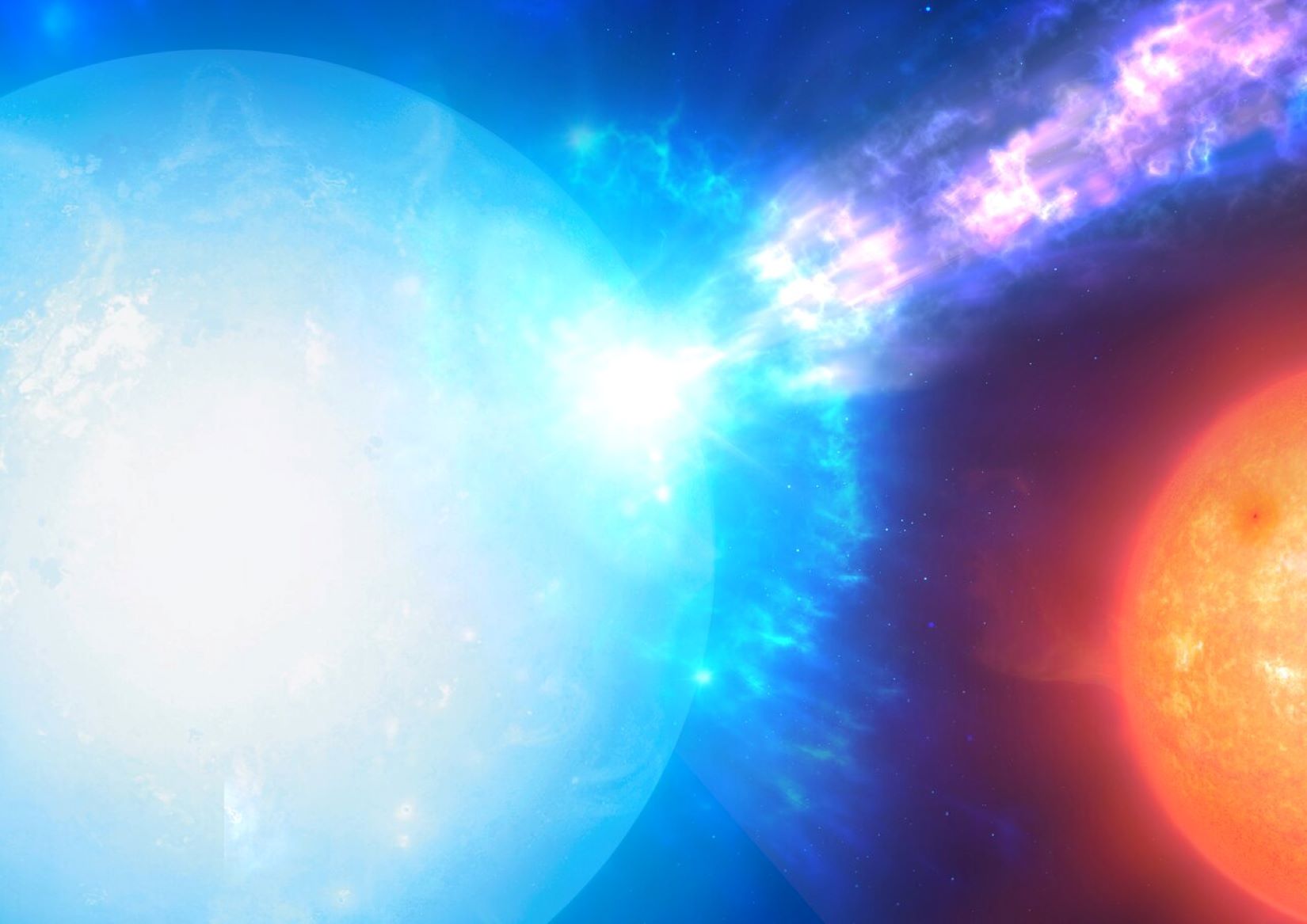The most energetic explosions in the Universe come from stars called supernovae. These galactic bombs have the energy of about 1028 mega-tons. After they detonate, the only thing left behind is either a neutron star or black hole. Another type of stellar explosion is known as a nova which has much less energy and covers the surface of a white dwarf.
Now, a team of astronomers recently discovered a new type of stellar explosion akin to supernovae and novae but with much less energy, and they’re calling it a micronova.
There are two types of supernovae, type I and type II. The first type happens in a binary star system, where two stars are gravitationally bound by each other, one being a white dwarf. The white dwarf collects matter from its companion star and eventually explodes, leaving nothing behind. The second type occurs when a star with enough mass, estimated to be in the range of eight to fifteen solar masses, runs out of nuclear fuel and its core collapses. The rebound from the collapse causes its outer layers to expand outward, leaving behind a neutron star or black hole.
A nova also happens on a white dwarf star in a binary star system and when enough material gathers on the surface of the star, a fusion reaction happens causing an explosion that engulfs the whole surface. This blast emits as much energy as our sun releases in 10,000 years.
Novae occurring on white dwarfs in a binary star system cover the entire star’s surface. However, while the newly discovered micronovae are caused by the same thing, these explosions happen when the material accreted onto the white dwarf from its companion accumulates at its magnetic poles. Novae can last for several weeks, but micronovae last only a few hours.

While examining data collected from NASA’s Transiting Exoplanet Survey Satellite (TESS), the astronomers “discovered something unusual: a bright flash of optical light lasting for a few hours. Searching further, we found several similar signals,” said Nathalie Degenaar, co-author of the paper recently published in the journal Nature (quoted from source).
They spotted three micronovae with this data. Using the European Southern Observatory’s Very Large Telescope (VLT) they were able to verify one of the star’s status as a white dwarf; the other two were known white dwarfs.
It is unknown how often these micronovae happen. According to Simone Scaringi of Durham University in the UK who is the lead astronomer for the team, “One of the systems shows evidence for micronovae recurring about every 100 days or so. Another target shows the bursts happening about every day on the other hand.” The regularity seems to be tied in to the amount of mass the white dwarf collects over a set amount of time. “The faster recurring system has a much higher mass accretion rate than the other system.”
Continuing on, Scaringi says “It may be that a specific system will show the (recurring) micronovae events only when the material being funneled on to the magnetic poles can remain confined for long enough to reach thermonuclear triggering conditions. In some occasions this may not happen, and material will (evenly) spread around the entire white dwarf surface, potentially building a layer of fresh hydrogen that may grow over time and drive a classical nova.”
“”These events may actually be quite common, but because they are so fast they are difficult to catch in action,” Scaringi explains” (source). In order to answer these questions the team wants to find more of these micronovae outbursts and are looking forward to using data from large-scale surveys combined with rapid response observations from telescopes like the VLT or ESO’s New Technology Telescope.
More:
- ESO.org (source): Astronomers discover micronovae, a new kind of stellar explosion
- NASA: White dwarf stars
- Space.com: What is a supernova?
Header: This artist’s impression shows a two-star system, with a white dwarf (in the foreground) and a companion star (in the background), where micronovae may occur. Credit: Mark Garlick

